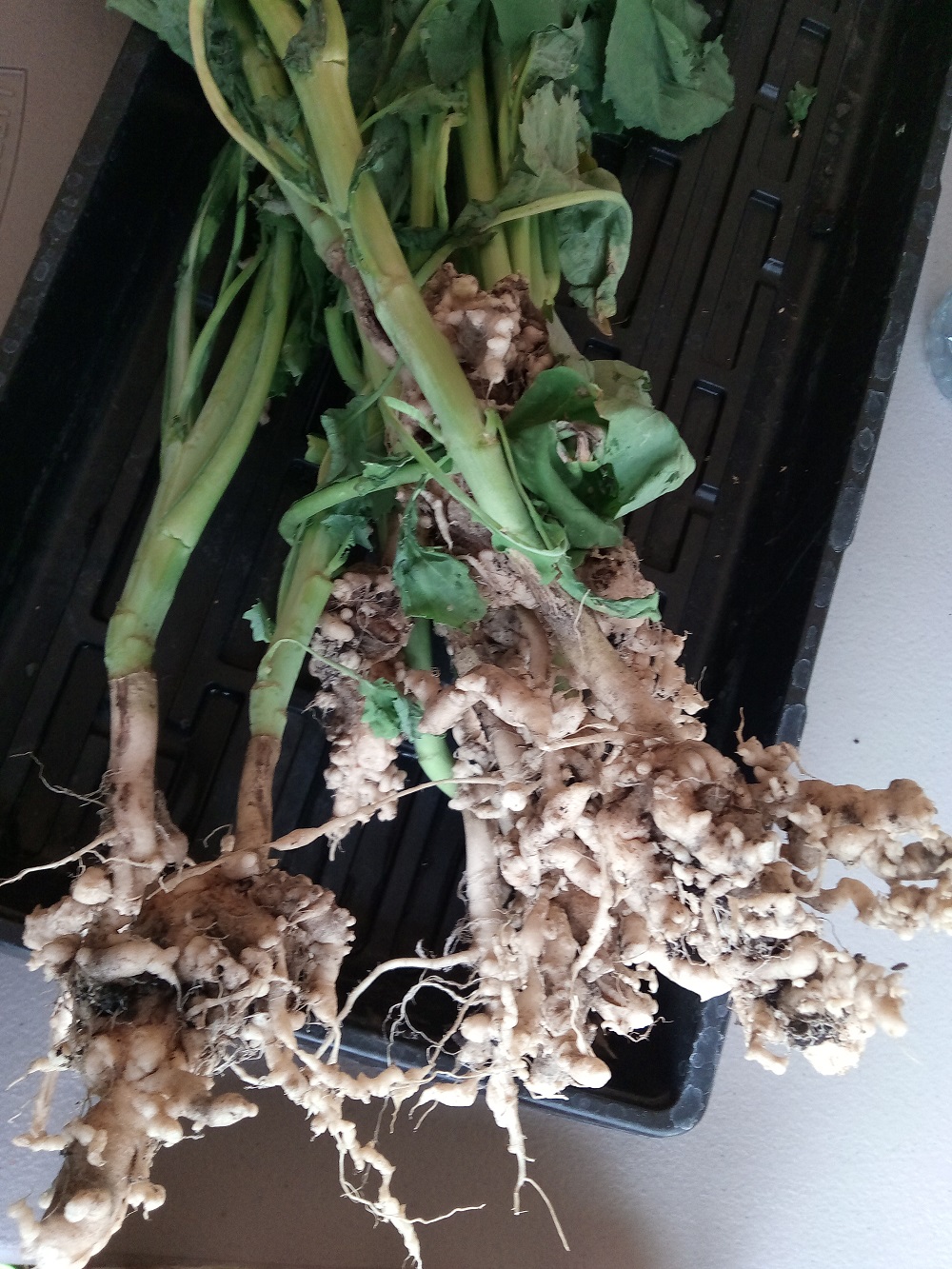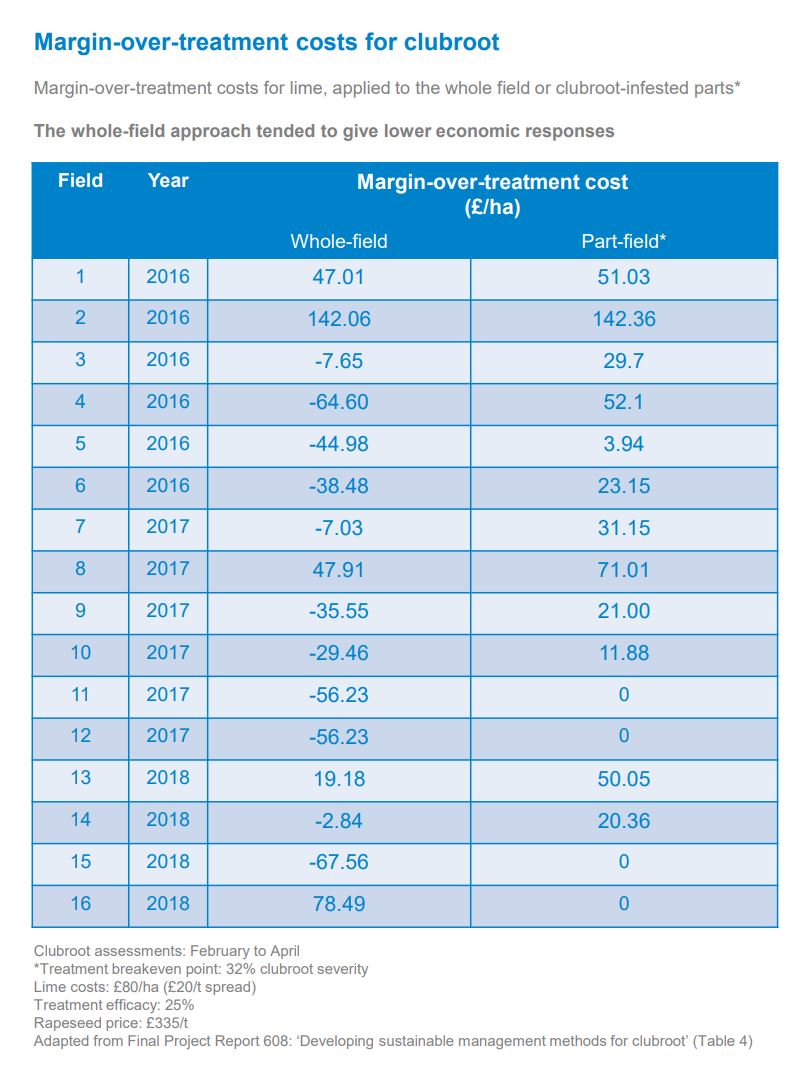Clubroot is patchy, diverse and requires targeted treatment
Monday, 22 July 2019
A tailored plan is required to contain the spread of clubroot and sustain the production of important brassica crop species in the UK, according to a new AHDB report.
The increasing prevalence of the disease, the diverse nature of the clubroot population, its patchy occurrence and the rise of resistance-breaking strains have all been revealed by the latest research.
Guidance to help farmers map clubroot pressures and identify management options, which include targeted treatment at problematic patches, has also been updated.
Clubroot, caused by the pathogen Plasmodiophora brassicae, has increased in the UK. The trend for shorter rotations, along with milder and wetter winters, have contributed to its rise.
If a susceptible crop is used in a clubroot-infected field, current advice is for a resistant variety to be grown. Such varieties contain the ‘Mendel’ resistance mechanism. However, the effectiveness of this mechanism has reduced at some UK sites in recent years. The researchers aimed to establish how significant and widespread the erosion of resistance is.
Soil samples from 75 high-risk clubroot fields were used to grow a resistant and a susceptible winter oilseed rape variety. In about half of these ‘bioassays’, the resistant variety developed relatively high symptoms. In fact, the levels were high enough at 15% of the sites to indicate that resistance was no longer functioning effectively.
Amanda Bennett, who manages soilborne disease research at AHDB, said: “Strains of clubroot that can break resistance were found across the UK. Growers should make use of integrated approaches to control this disease, including the use of non-susceptible crops in the rotation, to avoid driving the selection of resistance-breaking strains.”
A random subsample (25/75 fields) of soil was used to grow a standard set of 15 brassica lines from the European Clubroot Differential host set. The way these brassica plants developed clubroot symptoms allowed the number of pathotypes to be established. The UK clubroot population was found to be highly diverse. In fact, 20 different pathotypes were identified, in almost equal proportion.
The project also looked at the potential for targeted treatment (such as liming). The clubroot severity in commercial crops (16 fields) was assessed (50 m grid squares) at three timings over a growing season. This found that the disease was often patchy across the field. However, analysis of yield data revealed that the pathogen was just one cause of low-yielding patches. Despite this, economic modelling revealed, where disease was confined to patches, targeted treatment can make financial sense.
The accuracy of clubroot soil tests, including plant bioassays and molecular disease detection methods (qPCR), was assessed by comparing test results with clubroot symptoms expressed in the field. Molecular tests were found not to correlate well with in-field disease development. Visual assessments of plants and plant roots remain the most reliable way to assess the presence and distribution of clubroot across a field.
Growers should measure and record clubroot pressures, and document where resistant varieties have been grown. Such records can act as the foundation of an integrated clubroot management strategy.
Comprehensive information about clubroot, including hosts, symptoms, life cycle, importance, risk factors and management, can be accessed via ahdb.org.uk/clubroot
Notes to editors
Clubroot affects all cultivated and wild cruciferous plants. In addition to oilseed rape, all vegetable brassica species are affected. Other susceptible broad-acre arable crops include turnip, swede, Brussels sprouts, cauliflower, calabrese and mustard. Numerous weed species, such as charlock and shepherd’s-purse, are also common hosts.
Oilseed rape varieties resistant to the common strains of clubroot are detailed in the AHDB Recommended Lists.
This release is based on the final report of a 42-month project (21140006) that started in September 2015. The work was conducted by ADAS and SRUC. It was funded by a contract for £176,832 from AHDB, with in-kind contribution from Soil Essentials Ltd. and LS Plant Breeding.
Margin-over-treatment costs associated with whole-field and targeted lime applications are presented in the final report (see Table 4). Whole-field approaches tended to give lower economic responses.

Clubroot symptoms in oilseed rape

Table 1. AHDB research shows that targeted treatment of the worst clubroot-affected patches can improve economic returns, compared with whole-field approaches. Download a pdf of this table.

